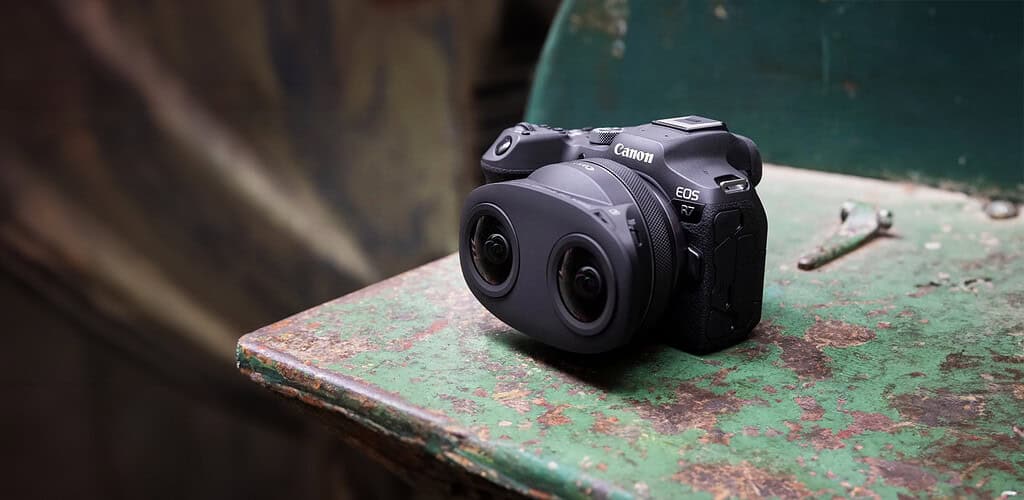




360° cameras such as the Insta360 Pro 2 or the Kandao Obsidian offer a complete all-round field of view, which provides a more immersive VR experience. However, these cameras are often more expensive and more complicated to use.
360° cameras are ideal for projects where a fully immersive experience is desired:
The price difference between 180° and 360° cameras is considerable. While a high-quality 180° camera such as the Canon Dual Fisheye costs around €2000, professional 360° cameras such as the Insta360 Titan cost around €17,000 and the Kandao Obsidian Pro as much as €24,000. For projects with a limited budget, the 180° solution is therefore often more attractive.
The choice between 180° and 360° cameras depends heavily on your specific application and budget:
For many projects, especially in the field of interviews or mobile recordings, a 180° camera such as the Canon Dual Fisheye is an excellent choice. However, for highly immersive VR experiences and more extensive productions, the investment in professional 360° cameras is justified. For sports footage and fast movements, a prosumer 360° camera such as the Insta360 X3 can be a cost-effective alternative, even if it cannot compete with the top models in terms of image quality and light sensitivity.
The world of immersive cameras offers exciting possibilities for creative projects. Choosing the right camera can make the difference between a good result and an outstanding one. Consider your specific requirements and budget to make the best decision.
180° video covers a hemispherical field of view, often in stereoscopic 3D;
360° video records in all directions - can be mono or stereoscopic.
180° video has more native pixels per degree → visibly higher sharpness.
360° video allows free viewing direction and subsequent selection of the image section (reframing).
Sharper images: e.g. the Canon RF 5.2 mm Dual Fisheye achieves VR footage that hardly looks blurred on current headsets.
Lower acquisition costs: the lens for 180° costs around 2,000.
Faster post-production - practically no stitching required. This shortens the computing time.
Viewers can only turn their heads to a limited extent, not all the way around; in addition, it is not possible to create a fully-fledged 360° video from 180° video material afterwards.
Complete 360° panorama: 8-11 K systems such as Insta360 Titan fill the entire viewing area with spatial depth.
Reframing: First film, then select the section - a workflow that Insta 360 camera software supports seamlessly.
Live streaming in up to 8 K is possible
Stitching effort: Clean stitching seams sometimes require special tools such as Mistika VR. Professional 360° cameras usually already have their own stitching tools that stitch well. Render times for stitching can be long.
Visible rig: Without an extension arm or retouching, the tripod often appears in the picture.
Loss of light and sharpness at the lens transitions with inexpensive twin-lens cams such as the Theta Z1.
Canon Dual Fisheye (180°): ≈2 000 € (lens only)
Insta360 titanium (11 K 360°): ≈17 000 €.
Kandao Obsidian Pro (12 K 360°): from ≈26 000 €.
Plus tripods, audio setup and high-performance workstation
Apple Vision Pro plays 180° 3D videos in native 8 K per eye. This means that even videos from a mid-range 360 cam with <6 K look soft here, while high-quality 11 K systems offer reserves.

Are you interested in developing a virtual reality or 360° video application? You may still have questions about budget and implementation. Feel free to contact me.
I am looking forward to you
Clarence Dadson CEO Design4real






